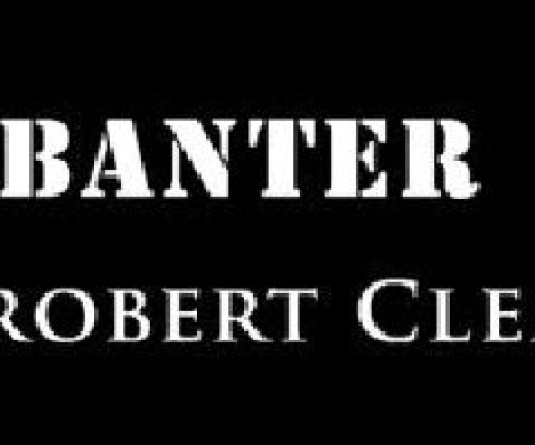
The fire accident which engulfed and razed the official residence of the Chief Minister Nagaland on the evening of 8th Feb 2011 was a very unfortunate incident but it once again serves as an eye opener to all citizens of the potential hazards that fire accident may cause leading to loss of lives and property. On this incident, questions were raised on the Fire Department’s response and the training of its personnel to handle fire fighting equipments in containing major fire and also the preparedness of the state machinery towards Disaster response. While the incident may be consigned to another public memory, our policy planner’s needs to seriously take note of the rapid unplanned urbanization growth especially in towns of Kohima and Dimapur where men made disasters of larger magnitude are waiting to happen if corrective measures are not taken.
In this write up, I would like to dwell on the basics of fire and our ability to detect and effectively control any fire from spreading further while waiting outside intervention. In case of any fire outbreak, the first few minutes are very crucial as the fire department/ disaster response teams takes 20-30 minutes to arrive from the first call unless located close to the site of incident. Hence, the general public needs to pragmatically understand the basics of fire, its causes and preventive measures.
Fire Basics
Fire is an exothermic chemical reaction involving rapid oxidation or burning of a fuel. The term fire may be defined as an oxidation process with evolution of heat and light. There are three essential elements for a fire to take place which are:
1. Fuel (combustible substance)
2. Heat (sufficient heat to ignite the combustible material) and
3. Oxygen (the supporter of combustion).
These three factors represent the three arms of a triangle. A fire cannot take place in the absence of any of these three factors. Removal of any one of these factors causes the fire triangle to collapse and further combustion stops.
The fuel (combustible substance) can be solid, liquid or gas. Combustible substance whether in solid state or in liquid state do not burn in their original state. They needed to be converted into vapours. Combustible materials when heated, give off vapours and it is the vapours that burns. Most solids or liquids become vapour or gas before they burn.
Heat is the energy necessary to increase the temperature of the fuel to a point where sufficient vapours are given off for ignition to occur. The temperature which the heat should initially generate to ignite the fire is called Ignition Temperature.
The air we breathe is about 21% oxygen. Fire needs only an atmosphere with atleast 16% oxygen.
Classification of Fires
Fire scientists have classified fires into various categories based on the nature of the combustible substance (fuel). Understanding this classification is of prime importance for dealing with fire hazards. This will be extremely helpful in putting off the fire in a quick, efficient and safe manner.
Fire is classified into four different categories as under:
1. Class “A” Fire: Involves fire in ordinary combustibles or fibrous carbonaceous material such as wood, paper, textiles etc. Here the cooling effect of water is essential for the extinction of fire. We bring down the temperature of the burning material from its ignition temperature and then we are in a position to put off this fire.
2. Class “B” Fire: Fires in flammable or combustible liquids such as petroleum products (gasoline, kerosene etc), paints, organic solvents (paint thinner), varnishes, acids etc. where a smothering/ blanketing effect is essential.
3. Class “C” Fire: Fire due to energized electrical equipment, such as appliances, switches, panel boxes and power tools.
4. Class “D” Fire: Certain combustible metals, such as magnesium, titanium, potassium and sodium burn at high temperatures and give off sufficient oxygen to support combustion. They may react violently with water or other chemicals and must be handled with care.
Fire Detection
Detecting a fire, sounding an alarm and then communicating during a fire call are all crucial to an effective suppression effort. Fire can be detected in two ways, manually by using hearing, sight or smell senses and through Automatic Fire detection (sensor) systems.
The Automatic Fire detection systems basically comprise of a Sensor Element and a Relay (to activate audible or visual or both alarm signals) and are divide into three parts:-
1. Detection device (also called sensor device)
2. Indicator panel and
3. Warning device
The Detection (sensor) Devices are designed to respond to smoke and others to heat. Sensor elements of Automatic Fire detection system are basically divided into two categories, Smoke detector which has Ionisation type and Photoelectric type and Heat detector which includes Ultra violet detector and Infrared detector.
Portable Fire Extinguisher
Vast majority of fires are small at first and might be extinguished easily if the proper type and amount of extinguishing agent were promptly applied. Portable fire extinguishers are designed for this purpose. They are lightweight, small and handy, carry limited amount of fire extinguishing media and used only on certain types of fire in the incipient stage and hence are also called First-Aid Fire Fighting Equipment.
More than one third of all industrial fires are successfully controlled by use of portable fire extinguishers. However, their successful use depends upon the following conditions:
1. The extinguisher must be located properly and be in good working order
2. The extinguisher must be the proper type for the fire which occurs
3. The Fire must be discovered while still small enough for the extinguisher to be effective
4. The fire must be discovered by someone who is ready, willing and be able to use the extinguisher.
Types of Fire Extinguishers
1. Dry Powder extinguishers are usually rated for multipurpose use. They contain an extinguishing agent and use a compressed, non flammable gas as a propellant.
2. Foam extinguishers have a smothering effect, depriving fire of oxygen. These types of fire extinguishers are especially effective on Class B (flammable liquid) fires; it can also be used on Class A (carbonaceous) fires, paper and wood.
3. Water extinguishers contain water and compressed gas and should only be used on Class A (ordinary combustibles) fires.
4. Carbon Dioxide (CO2) extinguishers are most effective on Class B and C (liquids and electrical) fires. Since the gas disperses quickly, these extinguishers are only effective from 3-8 feet. The carbon dioxide is stores as a compressed liquid in the extinguisher; as it expands, it cools the surrounding air. The cooling air will often cause ice to form around the “horn” where the gas is expelled from the extinguisher.
Classification of Portable Fire Extinguishers
Portable fire extinguishers vary in types, based upon the extinguishing agent they contain. Fire extinguishers use a picture/ labeling system to designate which types of fires they are to be used on. Most fire extinguishers are labeled with coloured geometrical shapes with letter designations and carry the ratings and operating instructions. Traditionally the labels A,B,C and D have been used to indicate the type of fire on which an extinguisher is to be used.
1. Class A Extinguishers are used to extinguish fires in ordinary combustibles such as wood, paper, cloth, rubber and plastics. Class A types of fire usually leave ashes after they burn.
A Class A Extinguisher is labeled in a triangle on the extinguisher. (Type A extinguishers for Ashes). This type of extinguisher contains water or a special dry chemical. They should not be used on electrical fires, flammable liquid or combustible metal fires.
2. Class B Extinguishers are used to extinguish flammable liquid fires such as solvents, oil, gasoline, paints, lacquers and grease.
Class B Extinguishers are labeled in a square on the extinguisher. (Type B extinguishers for Barrels). The agent used is normally dry chemical, carbon dioxide or halogenated. Water will normally only spread a flammable liquid fire and should not be used.
3. Class C Extinguishers are used to extinguish fires in wiring, fuse boxes, energized electrical equipment and other electrical sources. Water must not be used in these types of fire. The same type of materials used in Class B extinguishers maybe used in Class C if they are non conductive.
Class C Extinguishers are labeled in a circle on the extinguisher. Electricity travels in currents. (Type C extinguishers for Currents).
4. Class D Extinguishers are used to fight combustible metal fires such as magnesium, titanium and sodium. These types of fire are very dangerous and seldom handled by the general public
Class D Extinguishers are labeled in a star on the extinguisher. (Type D for Don’t get involved).
5. Class ABC Extinguishers are used to extinguish most of the fires that would be found on campus or at home. These are multipurpose dry chemical agents (ammonium phosphate).
Use of Portable Fire Extinguisher
It is important to use the correct fire extinguisher on a fire. Using one type of extinguisher on the wrong type of fire could be dangerous and make matters even worse. To control or extinguish a fire using a portable extinguisher, one should know the types of extinguishers viz, on what class of fire they can be used and how to activate and discharge the extinguisher correctly. It is important to remember that a portable fire extinguisher is a “First Aid Tool” and should not expect it to control a major fire. Their utility is for small isolated fires, for a short duration of (10-30 seconds depending on size) and short range (5-10 feet depending on size/type).
Important Reminders on FIRE OUTBREAK
FIGHT the fire only if:
1. The fire department has been notified
2. The area is being evacuated
3. The fire is small and confined to the immediate area
4. You can fight the fire with your back to the exit
5. You have the proper extinguisher and know how to use it and
6. You use good judgement about when to evacuate
NEVER fight a fire if:
1. The fire could block your escape route
2. You are uncertain about which extinguisher to use, or
3. You are not certain how to use the extinguisher
These situations could delay your escape
“Fire is considered as one of the greatest assets of mankind, yet it remains to be the worst enemy to the very mankind.”
Capt GK Zhimomi
“The writer is an Ex Army Officer and is presently a Certified Consultant on Industrial Security, Safety & Fire Protection Management to various Public Sector Enterprises.”
In this write up, I would like to dwell on the basics of fire and our ability to detect and effectively control any fire from spreading further while waiting outside intervention. In case of any fire outbreak, the first few minutes are very crucial as the fire department/ disaster response teams takes 20-30 minutes to arrive from the first call unless located close to the site of incident. Hence, the general public needs to pragmatically understand the basics of fire, its causes and preventive measures.
Fire Basics
Fire is an exothermic chemical reaction involving rapid oxidation or burning of a fuel. The term fire may be defined as an oxidation process with evolution of heat and light. There are three essential elements for a fire to take place which are:
1. Fuel (combustible substance)
2. Heat (sufficient heat to ignite the combustible material) and
3. Oxygen (the supporter of combustion).
These three factors represent the three arms of a triangle. A fire cannot take place in the absence of any of these three factors. Removal of any one of these factors causes the fire triangle to collapse and further combustion stops.
The fuel (combustible substance) can be solid, liquid or gas. Combustible substance whether in solid state or in liquid state do not burn in their original state. They needed to be converted into vapours. Combustible materials when heated, give off vapours and it is the vapours that burns. Most solids or liquids become vapour or gas before they burn.
Heat is the energy necessary to increase the temperature of the fuel to a point where sufficient vapours are given off for ignition to occur. The temperature which the heat should initially generate to ignite the fire is called Ignition Temperature.
The air we breathe is about 21% oxygen. Fire needs only an atmosphere with atleast 16% oxygen.
Classification of Fires
Fire scientists have classified fires into various categories based on the nature of the combustible substance (fuel). Understanding this classification is of prime importance for dealing with fire hazards. This will be extremely helpful in putting off the fire in a quick, efficient and safe manner.
Fire is classified into four different categories as under:
1. Class “A” Fire: Involves fire in ordinary combustibles or fibrous carbonaceous material such as wood, paper, textiles etc. Here the cooling effect of water is essential for the extinction of fire. We bring down the temperature of the burning material from its ignition temperature and then we are in a position to put off this fire.
2. Class “B” Fire: Fires in flammable or combustible liquids such as petroleum products (gasoline, kerosene etc), paints, organic solvents (paint thinner), varnishes, acids etc. where a smothering/ blanketing effect is essential.
3. Class “C” Fire: Fire due to energized electrical equipment, such as appliances, switches, panel boxes and power tools.
4. Class “D” Fire: Certain combustible metals, such as magnesium, titanium, potassium and sodium burn at high temperatures and give off sufficient oxygen to support combustion. They may react violently with water or other chemicals and must be handled with care.
Fire Detection
Detecting a fire, sounding an alarm and then communicating during a fire call are all crucial to an effective suppression effort. Fire can be detected in two ways, manually by using hearing, sight or smell senses and through Automatic Fire detection (sensor) systems.
The Automatic Fire detection systems basically comprise of a Sensor Element and a Relay (to activate audible or visual or both alarm signals) and are divide into three parts:-
1. Detection device (also called sensor device)
2. Indicator panel and
3. Warning device
The Detection (sensor) Devices are designed to respond to smoke and others to heat. Sensor elements of Automatic Fire detection system are basically divided into two categories, Smoke detector which has Ionisation type and Photoelectric type and Heat detector which includes Ultra violet detector and Infrared detector.
Portable Fire Extinguisher
Vast majority of fires are small at first and might be extinguished easily if the proper type and amount of extinguishing agent were promptly applied. Portable fire extinguishers are designed for this purpose. They are lightweight, small and handy, carry limited amount of fire extinguishing media and used only on certain types of fire in the incipient stage and hence are also called First-Aid Fire Fighting Equipment.
More than one third of all industrial fires are successfully controlled by use of portable fire extinguishers. However, their successful use depends upon the following conditions:
1. The extinguisher must be located properly and be in good working order
2. The extinguisher must be the proper type for the fire which occurs
3. The Fire must be discovered while still small enough for the extinguisher to be effective
4. The fire must be discovered by someone who is ready, willing and be able to use the extinguisher.
Types of Fire Extinguishers
1. Dry Powder extinguishers are usually rated for multipurpose use. They contain an extinguishing agent and use a compressed, non flammable gas as a propellant.
2. Foam extinguishers have a smothering effect, depriving fire of oxygen. These types of fire extinguishers are especially effective on Class B (flammable liquid) fires; it can also be used on Class A (carbonaceous) fires, paper and wood.
3. Water extinguishers contain water and compressed gas and should only be used on Class A (ordinary combustibles) fires.
4. Carbon Dioxide (CO2) extinguishers are most effective on Class B and C (liquids and electrical) fires. Since the gas disperses quickly, these extinguishers are only effective from 3-8 feet. The carbon dioxide is stores as a compressed liquid in the extinguisher; as it expands, it cools the surrounding air. The cooling air will often cause ice to form around the “horn” where the gas is expelled from the extinguisher.
Classification of Portable Fire Extinguishers
Portable fire extinguishers vary in types, based upon the extinguishing agent they contain. Fire extinguishers use a picture/ labeling system to designate which types of fires they are to be used on. Most fire extinguishers are labeled with coloured geometrical shapes with letter designations and carry the ratings and operating instructions. Traditionally the labels A,B,C and D have been used to indicate the type of fire on which an extinguisher is to be used.
1. Class A Extinguishers are used to extinguish fires in ordinary combustibles such as wood, paper, cloth, rubber and plastics. Class A types of fire usually leave ashes after they burn.
A Class A Extinguisher is labeled in a triangle on the extinguisher. (Type A extinguishers for Ashes). This type of extinguisher contains water or a special dry chemical. They should not be used on electrical fires, flammable liquid or combustible metal fires.
2. Class B Extinguishers are used to extinguish flammable liquid fires such as solvents, oil, gasoline, paints, lacquers and grease.
Class B Extinguishers are labeled in a square on the extinguisher. (Type B extinguishers for Barrels). The agent used is normally dry chemical, carbon dioxide or halogenated. Water will normally only spread a flammable liquid fire and should not be used.
3. Class C Extinguishers are used to extinguish fires in wiring, fuse boxes, energized electrical equipment and other electrical sources. Water must not be used in these types of fire. The same type of materials used in Class B extinguishers maybe used in Class C if they are non conductive.
Class C Extinguishers are labeled in a circle on the extinguisher. Electricity travels in currents. (Type C extinguishers for Currents).
4. Class D Extinguishers are used to fight combustible metal fires such as magnesium, titanium and sodium. These types of fire are very dangerous and seldom handled by the general public
Class D Extinguishers are labeled in a star on the extinguisher. (Type D for Don’t get involved).
5. Class ABC Extinguishers are used to extinguish most of the fires that would be found on campus or at home. These are multipurpose dry chemical agents (ammonium phosphate).
Use of Portable Fire Extinguisher
It is important to use the correct fire extinguisher on a fire. Using one type of extinguisher on the wrong type of fire could be dangerous and make matters even worse. To control or extinguish a fire using a portable extinguisher, one should know the types of extinguishers viz, on what class of fire they can be used and how to activate and discharge the extinguisher correctly. It is important to remember that a portable fire extinguisher is a “First Aid Tool” and should not expect it to control a major fire. Their utility is for small isolated fires, for a short duration of (10-30 seconds depending on size) and short range (5-10 feet depending on size/type).
Important Reminders on FIRE OUTBREAK
FIGHT the fire only if:
1. The fire department has been notified
2. The area is being evacuated
3. The fire is small and confined to the immediate area
4. You can fight the fire with your back to the exit
5. You have the proper extinguisher and know how to use it and
6. You use good judgement about when to evacuate
NEVER fight a fire if:
1. The fire could block your escape route
2. You are uncertain about which extinguisher to use, or
3. You are not certain how to use the extinguisher
These situations could delay your escape
“Fire is considered as one of the greatest assets of mankind, yet it remains to be the worst enemy to the very mankind.”
Capt GK Zhimomi
“The writer is an Ex Army Officer and is presently a Certified Consultant on Industrial Security, Safety & Fire Protection Management to various Public Sector Enterprises.”





